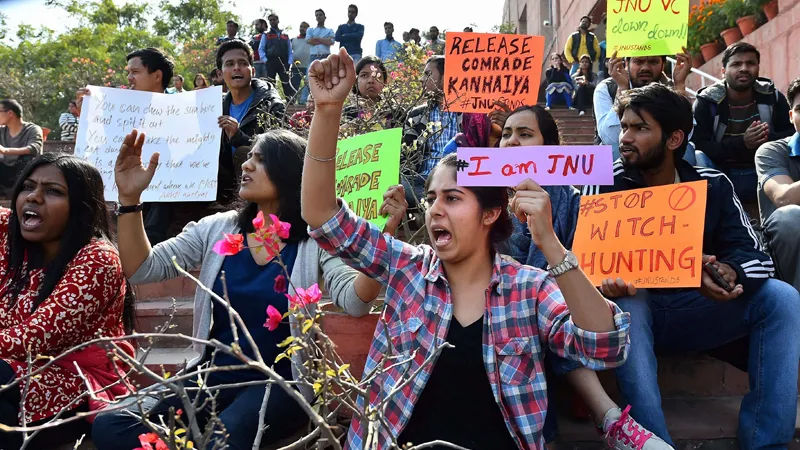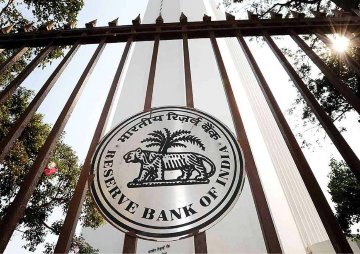Writing on the recent incidents at the Jawaharlal Nehru University is not easy. There are several phenomena involved. As such, any piece of writing on such a subject will inevitably be complex. It will leave some readers in agreement with some of the assessments being made, but not with others. It will also require stitching together disparate themes.
Let us consider the episode, then, not in terms of a chronological narrative but as a function of the role of and impact on the various stakeholders. To this writer's mind, there are five principal sets of stakeholders:
- The government and Delhi police
- The students and others gathered for the now infamous February 9 incident on the JNU campus
- The JNU community (admittedly an omnibus and inaccurate word, but more of that later)
- Political parties
- The media
How did each of these do?
The government and Delhi police: In terms of communication and outreach, inability to anticipate and defuse a crisis, and ineptitude in political management, the Narendra Modi government has set some sort of a record in the past 20 months. It has repeated many of the same mistakes over and over again.
It was no different this time, when the government failed spectacularly despite wider public sympathy not being with the "Afzal Guru Death Anniversary Commemoration" event at JNU. The use of the sedition charge against a JNU student was over the top. Sedition is a blockbuster expression that has been used and misused by various government over the years, in a variety of countries. It leaves most modern democracies uncomfortable. Indeed, many of the criminal acts considered seditious can be tried under various other laws - from hate speech laws to defamation laws to, in an extreme case, terrorism laws. As such, the efficacy and necessity of a sedition law is doubtful. To use it following a speech, however objectionable that speech may be, is difficult to defend.
That apart, the government was slow if not comical in presenting evidence of what it called the conspiracy behind the meeting in JNU. The Delhi Police chief didn't help matters by loosely tweeting about "blasphemy" - another dynamite word that only added to the turmoil that "sedition" had already caused.
The participants at the February 9 JNU rally: There are two categories here - the organisers of the original meeting, and Kanhaiya Kumar, President of the Jawaharlal Nehru University Students' Union. The original meeting was illegal, having been denied permission. Participants at the meeting chanted slogans against India and called for its breaking up. This amounted to objectionable and hate speech against the country, and against a broader community of Indians.
Kumar, by sympathetic accounts, arrived after these slogans had been heard. His supporters say he did not participate in that part of the meeting. However, his 20-odd minute speech, available on YouTube and accessible to anybody who knows Hindi, was vituperative even by conventional standards of student politics. At the very least, it accused the government (or the perhaps the political party heading the government) of gunning down citizens, gunning down Muslims and doing worse.
Did either of the two sets of words - the pre-Kumar slogans and Kumar's own speech - amount to sedition? The first set probably did, though one wouldn't recommend the sedition law even in that case. Was Kanhaiya Kumar in breach of the law? Well, by "wilfully joining an illegal assembly", he was technically in breach of the law, but that was admittedly a technicality.
More crucially, did these two sets of words - the pre-Kumar slogans and Kumar's own speech - cross a certain line in terms of decorum, decency and abuse of public amity, discourse and space? It is apparent they did. To pretend these are samples of "contrarianism" or part of the "multiple narratives of nationalism" is poppycock.
Is a statement such as the "country is made up of Ramzaade and haraamzade" an example of "multiple narratives of nationalism"? Is the suggestion that the Congress would not have made Sonia Gandhi party president if she had been African and black, rather than European and white, a rendition of "contrarianism", or is it simply a remark in disgustingly bad taste? Either all of the four examples given in the preceding paragraphs are fine in an astoundingly permissive society - or all merit rejection. One cannot pick and choose.
The JNU community: This is an inaccurate and catch-all phrase for a spectrum of groups and individuals with varying motives. There are the student body, the administrative staff association, the teachers' association, and presumably others. Are the others - the silent ones - in a minority or a majority? We don't know - and frankly, it doesn't matter. It needs to be understood though that while this episode and the manner in which communication technology has carried it far and wide has hurt perceptions of the government, it has not left JNU unscathed either.
Prospective students and their parents who may have watched videos of the February 9 meeting and of Kanhaiya Kumar will ask questions about the level of discourse and broader campus culture at the University. Second thoughts will arise. This would perhaps be unfair in making a mountain of a molehill. It may be part of a larger "crisis in Indian higher education" (a phrase this writer has been hearing for the past 40 years and a condition that successive governments, including the current one, have done little to remedy), but it can leave an immediate impact on JNU's reputation.
That is why this episode needs to be handled with sensitivity and calm, particularly by those who have the greatest stake in this leading university's future.
Political parties: The majority is not always right, and the majority may not always be in conformity with an individual's values, ethics and sense of right and wrong. Even so, the majority is a defining parameter in electoral politics and is the factor that drives political parties. It is a fair bet that the broader populace, outside the hot-house atmosphere of Lutyens' City and of TV-studio Delhi, finds the sort of slogans heard at JNU on February 9 to be abhorrent. In that sense, the government - despite its overreach - could be in smaller trouble than its political opponents believe.
When it comes to specific political parties, from the BJP to the CPI(M) to the CPI, from the Aam Aadmi Party to Kashmiri activists to the Maoists, they are all addressing identified constituencies. Even a screaming prime-time news anchor (who is of course not a political party) is addressing his constituency. The only one confused is Rahul Gandhi. His short and dramatic appearance at JNU had him in the midst of a crowd that is extremely unlikely to vote for the Congress. Indeed, the impulsive decision to go to the University and speak in that manner has left more than one senior Congress politician wondering if a middle-of-the-road position may not have been better.
The media: The attack on reporters by lawyers (some of who may well have had BJP connections) at the Patiala House Courts was unpardonable. The court premises are turbulent at the best of times, but this event took things too far. The police needs to redeem itself by arresting the guilty.
Quite separately, have well-known sections of the media covered the JNU affair appropriately? Coverage - a word that encompasses reportage, assessment, analysis and opinion - has sometimes been tendentious and catering to the "with us or against us" sentiment that the media so often accuses politicians of promoting.
This is not about political positions, it is about the greyness that makes up the craft of journalism and can be practised irrespective of voting preferences. Here the coverage of aTelegraph or of a Times Now has been equally un-nuanced. Both are painting a picture of an India in the midst of a massive conflict - but two qualitatively different conflicts. In reality, neither conflict exists.
It has become an epidemic. On social media, senior media-persons routinely critique and attack each other. They then quote each other's tweets and write up a story, pretending this echo chamber represents a "national debate". It does nothing of the sort; it only exaggerates the currents prevalent in a small geography in central Delhi.
Outside that small geography, the rest of India - one billion people and then some - carries on as usual.
This commentary originally appeared in NDTV.
The views expressed above belong to the author(s). ORF research and analyses now available on Telegram! Click here to access our curated content — blogs, longforms and interviews.




 PREV
PREV


